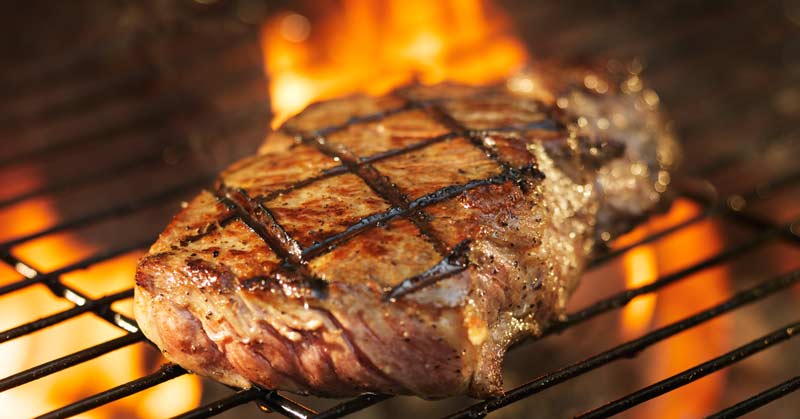
The debate between manipulating carbohydrate and fat metabolism for various weight loss and performance outcomes has gone back and forth by researchers for several decades, with no conclusive evidence supporting the extreme elimination diets we see so heavily marketed today. In the 1990s, high-carbohydrate nutrition was favored by the sports nutrition guidelines, recommending that at least 55% of energy come from carbohydrates in a given day (Burke, 2010). For endurance athletes, this number was recommended at greater than 60%; however, the research failed to support ‘why’ athletes needed this sort of macronutrient ratio for training (Burke, 2010). The evidence came after the millennium when it was found that higher carbohydrate intake could reduce (though not completely prevent) overreaching stress symptoms such as fatigue, sleeplessness, hormone disruption, and sub-par performance (Burke, 2010). In fact, withholding carbohydrates during the first few hours of recovery may hinder the functionality of the immune system and accentuate the immunosuppression occurring post-exercise (Burke, 2010). In addition, it was not found that moderate carbohydrate intake provided performance enhancement over a high-carbohydrate intake, so the guidelines remain in favor of carbohydrate availability for training purposes (Burke, 2010). High-fat nutrition has renewed interest once again, but is there enough to support a case for today’s endurance athlete?
The availability of a given substrate in the body largely determines our body’s fuel of choice at rest (Spriet, 2014). Exercise increases the metabolic demand on the body several-fold upon beginning a training session from rest, after which the body strives to achieve a steady state of aerobic intensity where the proportion of carbohydrates and fats finds an equilibrium in relation to an individual’s preference of fuel source (Spriet, 2014). When the power output of exercise exceeds 60% of maximal oxygen uptake (VO2max), studies have shown a decreased reliance on fat oxidation as a fuel source (Spriet, 2014). This decrease in free fatty acid release at higher intensities is likely due to a diversion of blood flow from adipose tissue to contracting muscles (Spriet, 2014). Above 75% of the VO2max, the majority of energy is derived from carbohydrate use, specifically muscle glycogen, in moderately trained individuals (Spiret, 2014). This is an important concept to consider when an endurance athlete is aiming to compete at 70-75% of maximum for extended periods of competition. The question remains whether or not it is possible to “teach” the body how to metabolically prefer fat as a fuel source at these competition intensities, which would go against the “default,” so-to-speak, of our innate preference for carbohydrates at these speeds.
Carbohydrate Intake
Carbohydrates have gotten a bad rap for supposedly contributing to an ever-growing trend of obesity and metabolic syndrome in our country. On a physiologic level, carbohydrate intake results in a release of insulin by the body to help shunt glucose into depleted cells, or in the case of an inactive population, into the fat cells for conversion and storage, resulting in excess weight gain. Upregulated insulin inadvertently inhibits the transfer of fat across membranes, blocking fat oxidation (also known as lipolysis) during exercise and even at rest (Spriet, 2014). The reverse is true also: in the presence of high-fat, carbohydrate metabolism is down-regulated (Hawley & Leckey, 2015). The proposed theories of high-fat, low-carb exploit this physiologic mechanism as a way to increase fatty acid oxidation at the expense of restricting carbohydrate intake. The attraction to high-fat, low-carb diets for athletes has recently caught the attention of many through the media highlights of any given elite who has successfully clinched a podium spot in a championship, purely by running on a ketogenic diet or the like. While these performances are being attributed to the nutritional habits of these athletes, the research says there is no correlation between increased fat oxidation and performance (Hawley & Leckey, 2015). Carbohydrates, not fat-based fuels, are the rate limiting factor in performance in trained endurance athletes (Hawley & Leckey, 2015). Fat-rich diets directly impair rates of muscle glycogenolysis, limiting high-intensity ATP-production necessary for energy at these paces (Hawley & Leckey, 2015).
Glycogen Sparing
Theoretically, if one can increase the availability of free fatty acids to the working muscles through a high-fat intake pre-workout or during a workout, precious glycogen in the muscles will be spared. Unfortunately, dietary attempts at proving this theory have been largely unsuccessful due to the slow oxidation of fat in relation to the rapid process of glycolysis (Spriet, 2014). Glycogen “sparing” sounds attractive, though closer examination of our physiology proves it is detrimental to inhibit the glycogenolytic process, a prerequisite for successful endurance performance (Hawley & Leckey, 2015). Some research has been successful in finding that high-fat dietary interventions do in fact increase the body’s ability to oxidize more fat during exercise, however, no increases in performance followed this metabolic shift (Spriet, 2014). Slower VO2 kinetics have also been observed following six days of a high-fat versus high-carb diet, supporting the field of evidence of performance detriment associated with this metabolic adaptation (Hawley & Leckey, 2015). In addition, unless the high-fat diet intervention is maintained, the desired metabolic shift is not a permanent change in the body (Spriet, 2014).
An overwhelming number of metabolic studies performed to date are on untrained subjects, in a fasted state, at a low-to-moderate intensity, and neglect to test at the same relative work-rate for pre- and post-experimentation; these conditions alone fail to mimic competitive race conditions and absolutely favor fat oxidation (Hawley & Leckey, 2015). The results we see published cannot be related to high-level athletes nor high-intensity workloads and should be applied no further than the general, untrained population upon whom these tests were conducted.
Study Population
Few studies do include experienced athletes as their subjects. One such study performed on cyclists undergoing a short-term (28d.) ketogenic (<20g carbs/day) diet observed a threefold drop in glucose oxidation and fourfold drop in muscle glycogen utilization which appears impressive. However, four of the five subjects experienced a reduction of VO2max as a result (Hawley & Leckey, 2015). The relationship between VO2 (measured in liters per minute) and speed is linear. Therefore an increase in the respiratory exchange ratio (RER) in favor of carbohydrate utilization, say from 0.97 to 1.00, results in a 0.73% increase in energy yield per liter of O2 consumed. This yield is directly proportional to a 0.15km/hr running speed increase in the top elite distance runners which would break the current world marathon record by 50 seconds under total carbohydrate-dependence (Hawley & Leckey, 2015).
Train Low, Compete High
The “train low, compete high” theory regarding carbohydrate refueling has been proposed as an alternative method to teaching the athlete’s body how to operate on a more metabolically efficient level (Burke, 2010). This concept requires an athlete to train with low-carb intake to increase the ability of the body to utilize fat as a primary fuel source, and while there is research to support this concept, none has been linked to a subsequent performance benefit (Burke, 2010). Moreover, there is evidence that training “low” reduces the ability to train at higher intensities due to an increased perception of effort and reduction in power output (Burke, 2010). In the eyes of a coach, this is not a favorable outcome during a progressive training cycle since outcome-defining training is conducted at high intensity, often at race pace or faster. Not to mention, the risk of illness associated with this dietary restriction is not worth the “efficiency” achieved for low-moderate intensity workloads (Burke, 2010). This nutritional strategy is best reserved for early season, low-intensity base-building work, which can safely be done in a glycogen-depleted state, for the purpose of shaping an ideal body composition before fuel-dependent high-volume and/or high-intensity training begins. Competitive athletes, aside from the occasional keto-black sheep, still freely select carbohydrate-rich diets for the benefit of sustaining muscle energy reserves and meeting high-stress training and performance demands (Hawley & Leckey, 2015).
Please share so others may benefit.
[mashshare]
References
- Burke, L. M. (2010). Fueling strategies to optimize performance: Training high or training low? Scandinavian Journal of Medicine & Science in Sports, 20, 48-58.
- Hawley, J. A. & Leckey, J. J. (2015). Carbohydrate dependence during prolonged, intense endurance exercise. Sports Medicine, 45(Suppl 1), S5-S12.
- Spriet, L. L. (2014). New insights into the interaction of carbohydrate and fat metabolism during exercise. Sports Medicine, 44, S87-S96.


